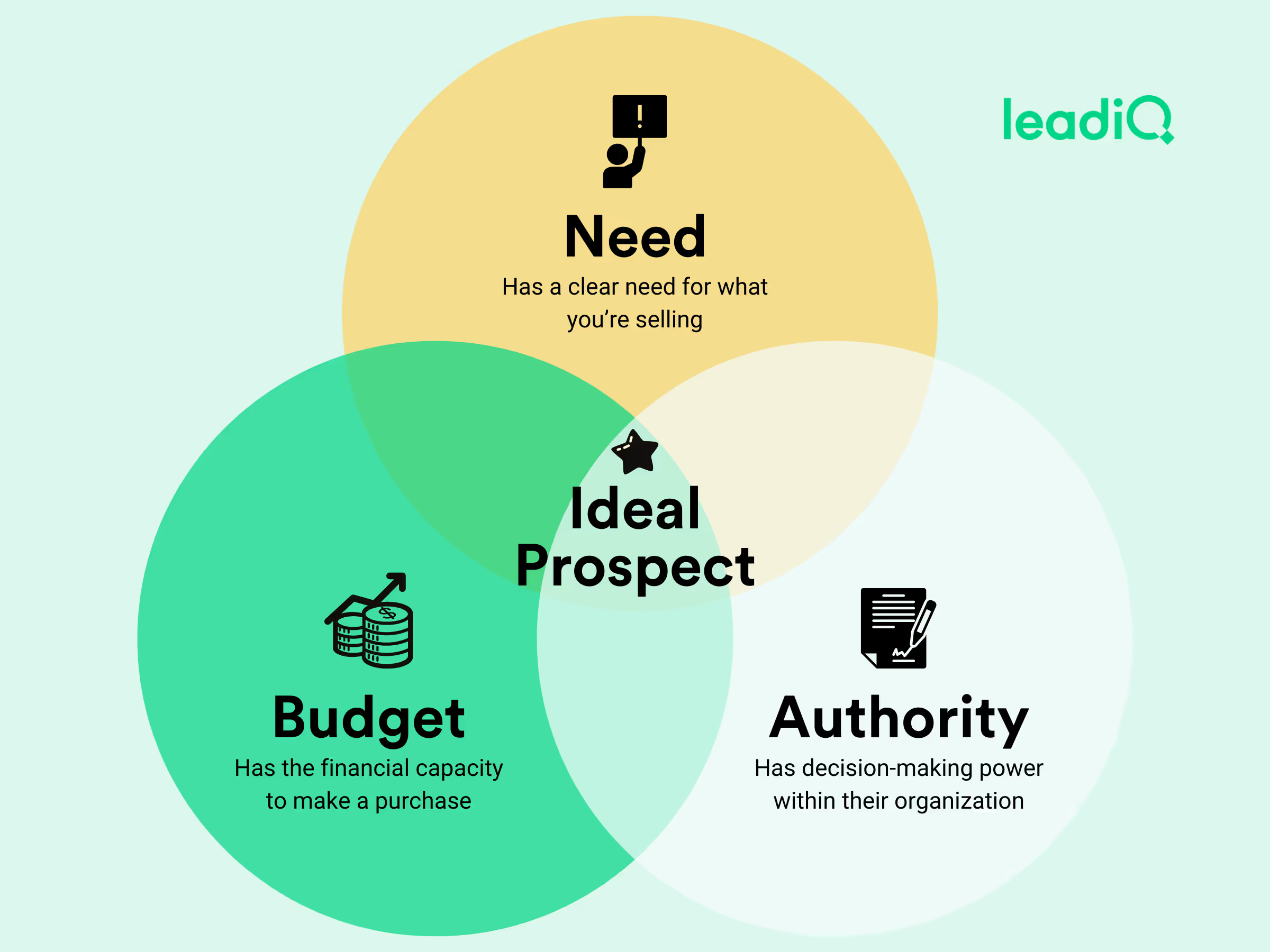Ready to create more pipeline?
Get a demo and discover why thousands of SDR and Sales teams trust LeadIQ to help them build pipeline confidently.



Building a successful sales pipeline hinges on using accurate, up-to-date data to avoid skewed forecasting and inefficient strategies.

Tailoring your pipeline stages to fit your business needs and understanding your ideal customer profile (ICP) are essential for targeting the right prospects and improving conversion rates.

Every sales team should track and analyze key sales pipeline metrics, such as lead conversion rates and sales cycle length, to continuously refine and optimize your sales process.
Get a demo and discover why thousands of SDR and Sales teams trust LeadIQ to help them build pipeline confidently.
Building a sales pipeline can often feel like navigating a maze, particularly for those new to sales roles or striving to refine their process. The primary challenge is dealing with inaccurate data, which can skew forecasting and strategy. Additionally, a clunky prospecting process, reliance on generic emails yielding low engagement, and outdated CRM data further complicate the task. These hurdles not only dampen efficiency but also impact the potential success of sales initiatives.
A sales pipeline is a strategic framework that outlines the journey of a prospect from initial contact to closing a deal. It's crucial for businesses to manage and forecast sales activities accurately, but the path to creating an effective pipeline can be complex. This article aims to guide you through these challenges, offering insights and tools to build a pipeline that aligns with your sales goals. Understanding the essence and mechanics of a sales pipeline is the first stride towards mastering its construction and harnessing its full potential.
A sales pipeline is a visual and strategic representation of the sales process, tracking a prospect's journey from the first point of contact to the final sale. It serves as a roadmap for sales teams, outlining clear steps and phases in converting prospects into customers. The pipeline's primary purpose is to organize and manage sales activities, helping teams to focus efforts and forecast future revenue accurately.
In contrast, a sales funnel depicts the theoretical journey of a prospect through the buying process. It's an illustrative tool to understand customer behavior and decision-making. The sales funnel typically includes stages like:
Recognizing where a prospect lies in the sales funnel is critical for establishing an effective sales pipeline. It allows you to tailor your approach, ensuring that your strategies are aligned with the prospect's stage in the buying process. This alignment helps in targeting the right prospects at the right time.
The sales pipeline consists of a series of stages, and understanding and effectively managing them is crucial to building an efficient sales pipeline:
Understanding and effectively implementing these steps can help you facilitate an efficient and successful sales process.
Building a sales pipeline is a structured approach to managing sales activities, and it begins with a comprehensive understanding of your business and its offerings. The key is to gather in-depth knowledge about your company, brand, products, or services, and couple this with a detailed insight into your target market. It's essential to understand who your customers are, where they are in the buying process, and how they engage with your brand, so you can avoid common sales pipeline mistakes.
Creating a basic sales pipeline provides a starting point, but it should be flexible enough to allow for adjustments and enhancements as your business evolves and grows. A well-constructed pipeline not only streamlines the sales process but also provides valuable insights for continuous improvement.

Customizing your sales pipeline stages is about tailoring the process to fit your specific business needs and objectives. This customization is crucial because not all sales processes are identical—they vary significantly across different roles, industries, and business goals.
For instance, a tech company might emphasize the demo stage, while a service-based business might focus more on consultation. A common challenge here is determining which stages are most relevant to your business. You can overcome this by analyzing past sales data to identify key stages in your customer's journey.
Understanding your ideal customer involves creating detailed Ideal Customer Profiles (ICPs) that represent the types of customers who are most likely to benefit from and purchase your products or services. To develop ICPs, consider a variety of factors such as demographics, industry, specific pain points, and buying behavior. This detailed characterization helps in targeting the right prospects and customizing your sales approach to the customer’s needs.
A challenge that sales development representatives (SDRs) and account executives (AEs) often face during this step is a lack of in-depth customer data. This gap can lead to a vague understanding of your target audience, diminishing the effectiveness of your sales efforts. To overcome this, invest time in comprehensive market research. Analyze industry trends, gather feedback from existing customers, and study competitor approaches. Surveys, interviews, and focus groups can be invaluable in gaining insights into customer preferences and behavior.
Additionally, look into data analytics tools that can provide deeper insights into customer behavior and preferences. They can help you identify patterns and trends that might not be immediately obvious but are crucial in shaping your ICPs. By continuously refining your ICPs based on new data and insights, you ensure that your sales pipeline remains aligned with the evolving needs and characteristics of your target market.
You can find and collect a list of prospects using your ICP as a guide to identify potential customers. This step is essential because it feeds into the first stage of the sales cycle, which establishes a framework for subsequent stages. Differentiating between high and low-quality leads can be challenging, but you can use lead scoring techniques to prioritize prospects that best match your ICP. Consider using tools that integrate with your CRM to collect accurate, up-to-date contact data and streamline the rest of your sales process.

Assigning specific tasks to each stage of the sales cycle is crucial for a sales team's efficiency and focus. By breaking down the cycle into clear stages like prospecting, connecting, presenting, handling objections, closing, and following up, team members gain a clear understanding of their responsibilities. This structure minimizes confusion and overlap, ensuring smooth progress from one stage to the next.
Sometimes, ensuring that team members fully grasp their responsibilities and have the necessary skills and tools to execute them effectively can be challenging. To overcome these obstacles, it's essential to provide clear guidelines and engage in ongoing training. Regular workshops, coaching sessions, and sales webinars can keep the team up-to-date with the latest sales techniques and developments in technology.
Moreover, regular evaluation of each stage's effectiveness is helpful for continuous improvement. This involves analyzing sales data, soliciting team feedback, and keeping an eye on market trends. These evaluations help in making necessary adjustments, whether in prospecting approaches or closing techniques, enhancing the efficacy of the entire sales cycle.
Identifying and tracking sales pipeline metrics revolves around monitoring key performance indicators (KPIs) that offer a comprehensive view of the pipeline's health and effectiveness. Metrics to consider include:
One of the primary challenges lies in choosing the right metrics to track. Not all metrics will be equally relevant for every business, and some might offer more actionable insights than others. The key is to focus on those that align closely with your business goals. For example, if the goal is rapid market expansion, tracking information related to customer acquisition and lead conversion might be more pertinent than tracking average deal size.
Sales technology can play a significant role in enhancing the ability to monitor and improve these KPIs. Sales automation tools, CRM (Customer Relationship Management) systems, and analytics platforms can streamline various aspects of the sales process. These can provide real-time data, predictive analytics, and detailed reports, enabling sales teams to make informed decisions and adjust strategies more effectively.
A sales pipeline is a strategic tool that outlines the journey of potential customers from initial contact to finalizing a sale. Its purpose is to provide a structured approach for managing sales activities, enabling accurate forecasting, and driving business growth. Remember, assembling a sales pipeline isn't a one-time endeavor; it requires ongoing refinement and adaptation to align with evolving business dynamics and market trends. Here are some key points to keep in mind:
Building a robust sales pipeline is fundamental to the success of any sales executive or team. With various methods and resources available, finding the right combination that aligns with your goals is essential. Navigating through this process can be challenging, but the right software can significantly ease the burden and streamline your approach.
LeadIQ transforms the sales prospecting process by providing SDRs and AEs with accurate, verified contact data that you can easily integrate with your CRM with a single click. LeadIQ ensures your data remains current with automatic enrichment and keeps you informed about important sales triggers. Additionally, its advanced AI technology aids in crafting personalized messages, simplifying and enhancing your prospecting efforts. It's not just about gathering data; it's about making prospecting more productive and tailored to your needs.
To learn more about how LeadIQ can revolutionize your pipeline building, watch one of our latest webinars: "Turn Job Changes into Pipeline with Contact Tracking."